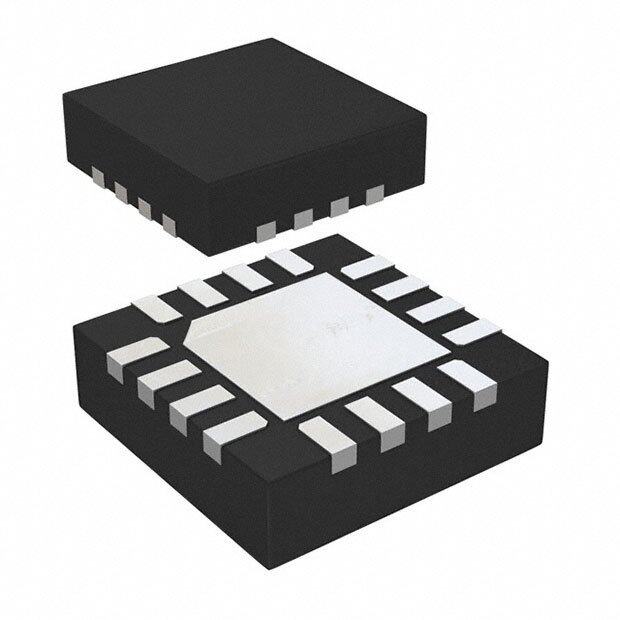ICGOO在线商城 > 集成电路(IC) > PMIC - 电池充电器 > MCP73123-22SI/MF
- 型号: MCP73123-22SI/MF
- 制造商: Microchip
- 库位|库存: xxxx|xxxx
- 要求:
| 数量阶梯 | 香港交货 | 国内含税 |
| +xxxx | $xxxx | ¥xxxx |
查看当月历史价格
查看今年历史价格
MCP73123-22SI/MF产品简介:
ICGOO电子元器件商城为您提供MCP73123-22SI/MF由Microchip设计生产,在icgoo商城现货销售,并且可以通过原厂、代理商等渠道进行代购。 MCP73123-22SI/MF价格参考¥7.94-¥8.13。MicrochipMCP73123-22SI/MF封装/规格:PMIC - 电池充电器, Charger IC Lithium-Iron Phosphate 10-DFN (3x3)。您可以下载MCP73123-22SI/MF参考资料、Datasheet数据手册功能说明书,资料中有MCP73123-22SI/MF 详细功能的应用电路图电压和使用方法及教程。
MCP73123-22SI/MF 是由Microchip Technology生产的一款PMIC(电源管理集成电路),专为锂离子和锂聚合物电池充电设计。该芯片具备高集成度、小尺寸和高效能的特点,适用于便携式电子设备。 应用场景 1. 便携式消费电子产品: - 智能手机和平板电脑:MCP73123-22SI/MF 可以为这些设备提供稳定的充电解决方案,确保电池在各种条件下都能安全、快速地充电。 - 智能手表和健身追踪器:由于其低功耗和小尺寸特性,非常适合用于小型穿戴设备,延长设备的续航时间。 2. 物联网设备: - 智能家居设备:如智能门锁、摄像头、传感器等,这些设备通常需要长时间运行,MCP73123-22SI/MF 可以确保电池充电过程的安全性和效率。 - 工业物联网设备:例如远程监控设备、环境传感器等,这些设备通常部署在偏远或难以频繁维护的环境中,可靠的充电管理至关重要。 3. 医疗设备: - 便携式医疗仪器:如血糖仪、脉搏血氧仪等,这些设备对电池寿命和充电安全性有严格要求,MCP73123-22SI/MF 能够提供精确的充电控制,确保设备的稳定运行。 - 可穿戴健康监测设备:如心率监测器、睡眠追踪器等,其高效的充电管理有助于提高用户体验。 4. 手持式工具和设备: - 电动工具:如电钻、螺丝刀等,这些工具需要快速且可靠地充电,以保证工作效率。 - 手持式扫描仪和终端:如条形码扫描仪、移动支付终端等,MCP73123-22SI/MF 可以确保设备在高强度使用下的持续供电。 特点与优势 - 集成度高:内置了多种保护功能,如过温保护、过流保护、短路保护等,简化了外部电路设计。 - 充电效率高:支持恒流/恒压充电模式,能够根据电池状态自动调整充电参数,提高充电效率。 - 低静态电流:在待机状态下消耗极低的电流,延长电池寿命。 - 温度补偿:能够在不同温度环境下保持稳定的充电性能,确保电池安全。 总之,MCP73123-22SI/MF 以其高效、安全、可靠的充电管理能力,广泛应用于各类便携式电子设备中,特别适合对电池寿命和充电安全性有较高要求的产品。
| 参数 | 数值 |
| 产品目录 | 集成电路 (IC)半导体 |
| 描述 | IC LI IRON PHOSPHATE CTRLR 10DFN电池管理 Sngl cel OVP LiFEPO3 battery charger |
| 产品分类 | |
| 品牌 | Microchip Technology |
| 产品手册 | |
| 产品图片 |
|
| rohs | 符合RoHS无铅 / 符合限制有害物质指令(RoHS)规范要求 |
| 产品系列 | 电源管理 IC,电池管理,Microchip Technology MCP73123-22SI/MF- |
| 数据手册 | 点击此处下载产品Datasheethttp://www.microchip.com/mymicrochip/filehandler.aspx?ddocname=en544014 |
| 产品型号 | MCP73123-22SI/MF |
| UVLO停止阈值 | 4.05 V |
| UVLO起动阈值 | 4.15 V |
| 产品目录页面 | |
| 产品种类 | 电池管理 |
| 产品类型 | Charge Management |
| 供应商器件封装 | 10-DFN(3x3) |
| 其它名称 | MCP7312322SIMF |
| 功能 | 充电管理 |
| 包装 | 管件 |
| 商标 | Microchip Technology |
| 安装类型 | 表面贴装 |
| 安装风格 | SMD/SMT |
| 封装 | Tube |
| 封装/外壳 | 10-VFDFN 裸露焊盘 |
| 封装/箱体 | DFN-10, 3 x 3 |
| 工作温度 | -40°C ~ 85°C |
| 工作电源电压 | 4.2 V to 13 V |
| 工作电源电流 | 700 uA |
| 工厂包装数量 | 120 |
| 最大工作温度 | + 85 C |
| 最小工作温度 | - 40 C |
| 标准包装 | 120 |
| 温度监测 | No Temperature Monitoring |
| 电压-电源 | 4 V ~ 16 V |
| 电池化学 | 磷酸铁锂 |
| 电池类型 | Lithium Iron Phosphate |
| 电荷安全定时器 | No Charge Safety Timers |
| 输出电压 | 3.6 V |
| 输出电流 | 130 mA to 1100 mA |
| 配用 | /product-detail/zh/MCP73X23EV-LFP/MCP73X23EV-LFP-ND/2170224 |

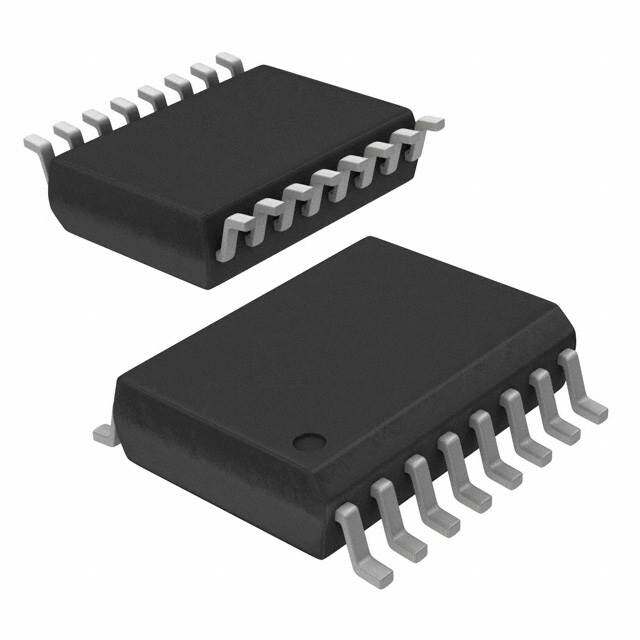


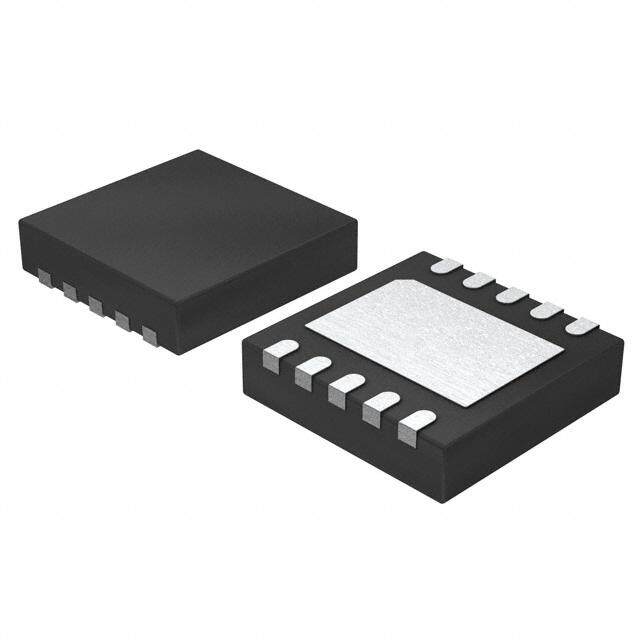

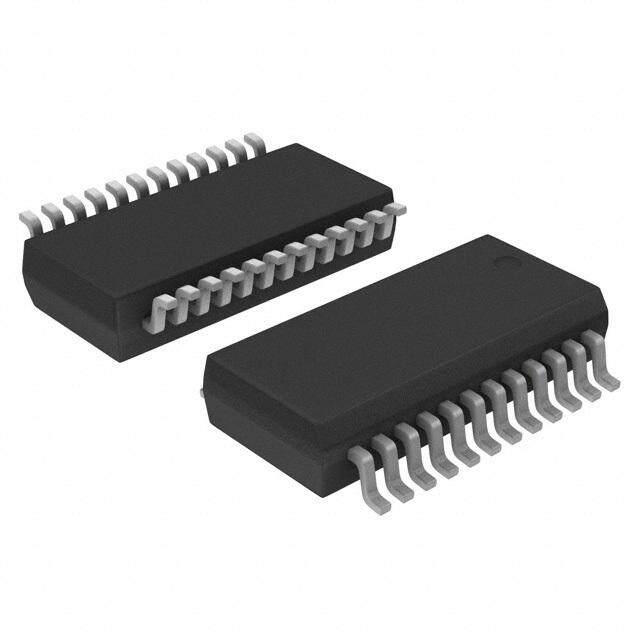


- 商务部:美国ITC正式对集成电路等产品启动337调查
- 曝三星4nm工艺存在良率问题 高通将骁龙8 Gen1或转产台积电
- 太阳诱电将投资9.5亿元在常州建新厂生产MLCC 预计2023年完工
- 英特尔发布欧洲新工厂建设计划 深化IDM 2.0 战略
- 台积电先进制程称霸业界 有大客户加持明年业绩稳了
- 达到5530亿美元!SIA预计今年全球半导体销售额将创下新高
- 英特尔拟将自动驾驶子公司Mobileye上市 估值或超500亿美元
- 三星加码芯片和SET,合并消费电子和移动部门,撤换高东真等 CEO
- 三星电子宣布重大人事变动 还合并消费电子和移动部门
- 海关总署:前11个月进口集成电路产品价值2.52万亿元 增长14.8%

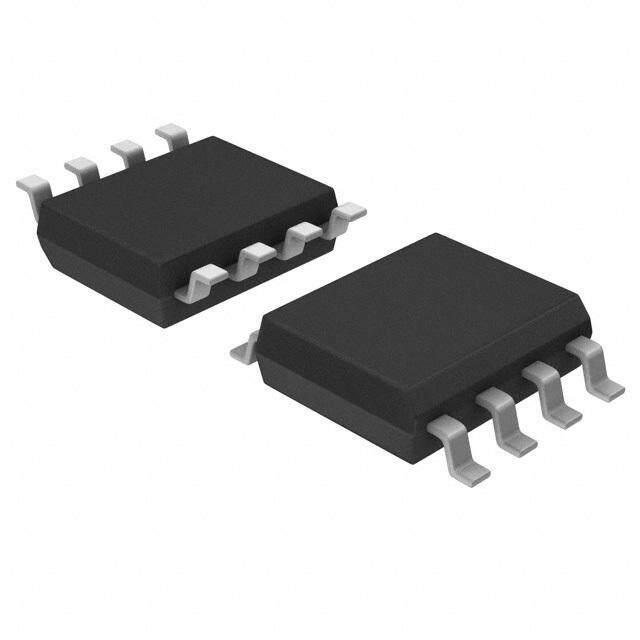
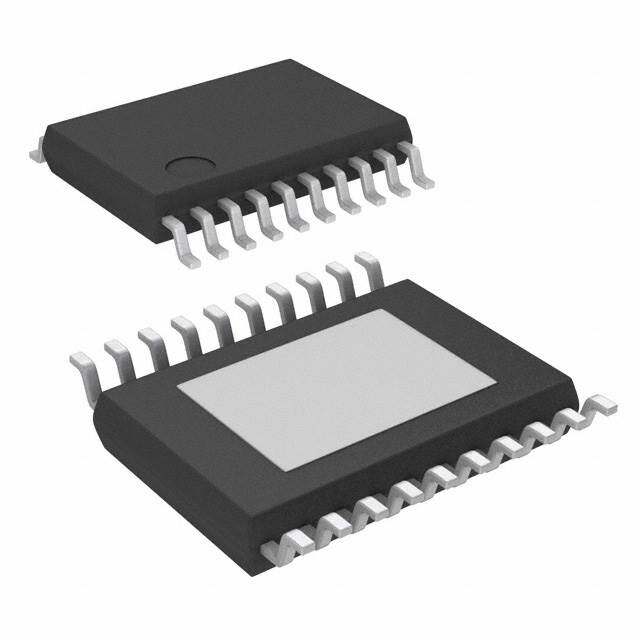
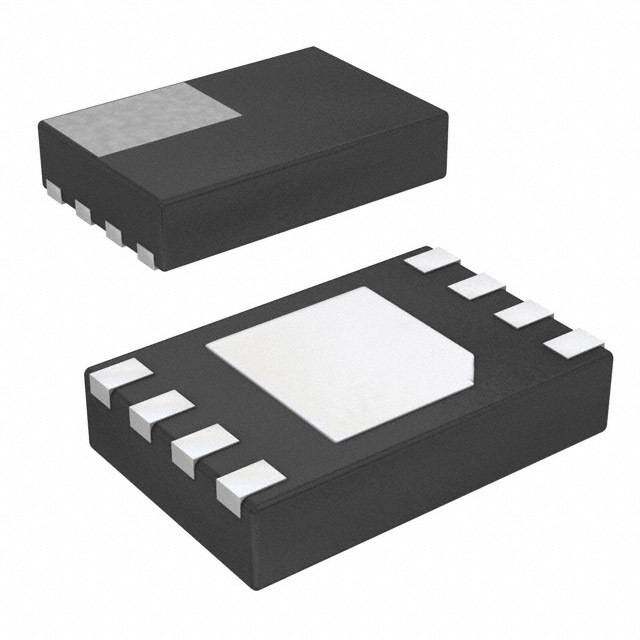
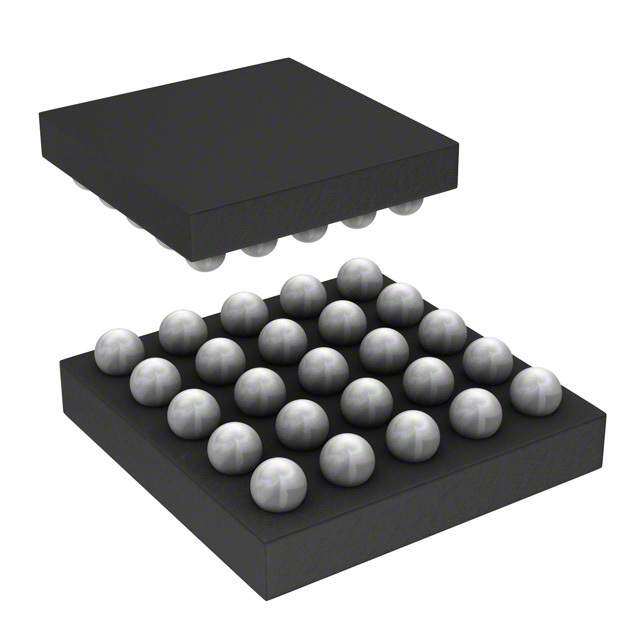

PDF Datasheet 数据手册内容提取
MCP73123/223 Lithium Iron Phosphate (LiFePO ) Battery Charge 4 Management Controller with Input Overvoltage Protection Features • Backup Energy Storages • Complete Linear Charge Management Controller: Description - Integrated Input Overvoltage Protection - Integrated Pass Transistor The MCP73123/223 is a highly integrated Lithium Iron Phosphate(LiFePO ) battery charge management - Integrated Current Sense 4 controller for use in space-limited and cost-sensitive - Integrated Reverse Discharge Protection applications. The MCP73123/223 provides specific • Constant Current / Constant Voltage Operation charge algorithms for LiFePO batteries to achieve 4 with Thermal Regulation optimal capacity and safety in the shortest charging • 4.15V Undervoltage Lockout (UVLO) time possible. Along with its small physical size, the low • 18V Absolute Maximum Input with OVP: number of external components makes the MCP73123/223 ideally suitable for various - 6.5V - MCP73123 applications. The absolute maximum voltage, up to - 13V - MCP73223 18V, allows the use of MCP73123/223 in harsh • High Accuracy Preset Voltage Regulation environments, such as low cost wall wart or voltage Through Full Temperature Range (-5°C to +55°C): spikes from plug/unplug. - + 0.5% - MCP73123 The MCP73123/223 employs a constant current / - + 0.6% - MCP73223 constant voltage charge algorithm. The 3.6V per cell • Battery Charge Voltage Options: factory preset reference voltage simplifies design with - 3.6V - MCP73123 2V preconditioning threshold. The fast charge, constant current value is set with one external resistor - 7.2V - MCP73223 from 130mA to 1100mA. The MCP73123/223 also • Resistor Programmable Fast Charge Current: limits the charge current based on die temperature - 130mA - 1100mA during high power or high ambient conditions. This • Preconditioning of Deeply Depleted Cells: thermal regulation optimizes the charge cycle time - Available Options: 10% or Disable while maintaining device reliability. • Integrated Precondition Timer: The PROG pin of the MCP73123/223 also serves as enable pin. When high impedance is applied, the - 32 Minutes or Disable MCP73123/223 will be in standby mode. • Automatic End-of-Charge Control: The MCP73123/223 is fully specified over the ambient - Selectable Minimum Current Ratio: temperature range of -40°C to +85°C. The MCP73123/ 5%, 7.5%, 10% or 20% 223 is available in a 10lead, DFN package. - Elapse Safety Timer: 4HR, 6HR, 8HR or Disable Package Types (Top View) • Automatic Recharge: - Available Options: 95% or Disable MCP73123/223 3x3DFN * • Factory Preset Charge Status Output: - On/Off or Flashing VDD 1 10 PROG • Soft Start VDD 2 9 VSS • Temperature Range: -40°C to +85°C EP • Packaging:DFN-10 (3mm x 3mm) VBAT 3 11 8 VSS VBAT 4 7 STAT Applications NC 5 6 NC • Low-Cost LiFePO Battery Chargers * Includes Exposed Thermal Pad (EP); see Table3-1. 4 • Power Tools • Toys © 2009 Microchip Technology Inc. DS22191A-page 1
MCP73123/223 Typical Application MCP73123 Typical Application 1 3 Ac-dc-Adapter VDD VBAT 4 2 VDD VBAT + 4.7µF 4.7µF 7 10 1-Cell STAT PROG LiFePO 4 Battery 1kΩ 5 NC 9 1.15kΩ - V SS 8 6 NC V SS TABLE 1: AVAILABLE FACTORY PRESET OPTIONS Pre- Pre- End-of- Charge Precondition Elapse Automatic Output OVP conditioning conditioning Charge Voltage Timer Timer Recharge Status Charge Current Threshold Control 3.6V 6.5V Disable / 10% 2V Disable / Disable / 4 HR / 5% / 7.5% / No / Type 1 / 32 Minimum 6 HR / 8 HR 10% / 20% Yes Type 2 7.2V 13V Disable / 10% 4V Disable / Disable / 4 HR / 5% / 7.5% / No / Type 1 / 32 Minimum 6 HR / 8 HR 10% / 20% Yes Type 2 Note 1: I : Regulated fast charge current. REG 2: V : Regulated charge voltage. REG 3: I /I : Preconditioning charge current; ratio of regulated fast charge current. PREG REG 4: I /I : End-of-Charge control; ratio of regulated fast charge current. TERM REG 5: V /V : Recharge threshold; ratio of regulated battery voltage. RTH REG 6: V /V : Preconditioning threshold voltage PTH REG TABLE 2: STANDARD SAMPLE OPTIONS Part V OVP I /I Pre-charge Elapse I /I V /V V /V Output REG PREG REG TERM REG RTH REG PTH REG Number Timer Timer Status MCP73123-22S/MF 3.6V 6.5V 10% 32 Min. 6 HR 10% 95% 2V Type 1 MCP73223-C2S/MF 7.2V 6.5V 10% 32 Min. 6 HR 10% 95% 4V Type 1 Note 1: Customers should contact their distributor, representatives or field application engineer (FAE) for support and sample. Local sales offices are also available to help customers. A listing of sales offices and locations is included in the back of this document. Technical support is available through the web site at: http//support.microchip.com DS22191A-page 2 © 2009 Microchip Technology Inc.
MCP73123/223 Functional Block Diagram VO REG Direction C ontrol V V BAT DD Current Limit + VREF - PROG CA Reference, V (1.21V) + REF Bias, UVLO, - and SHDN VO UVLO + REG - - Precondition + Term - + Charge Charge STAT Control, VA + Timer, and - Status Logic V - 6.5V / 13V SS + V DD Input OverVP - 95% VREG - 110°C + V BAT + TSD *Recharge Thermal Regulation *Only available on selected options © 2009 Microchip Technology Inc. DS22191A-page 3
MCP73123/223 NOTES: DS22191A-page 4 © 2009 Microchip Technology Inc.
MCP73123/223 1.0 ELECTRICAL † Notice: Stresses above those listed under “Maximum Ratings” may cause permanent damage to the device. This is CHARACTERISTICS a stress rating only and functional operation of the device at those or any other conditions above those indicated in the Absolute Maximum Ratings† operational listings of this specification is not implied. Exposure to maximum rating conditions for extended periods VDD................................................................................18.0V may affect device reliability. V ..............................................................................6.0V PROG All Inputs and Outputs w.r.t. V ...............-0.3 to (V +0.3)V SS DD Maximum Junction Temperature, T ............Internally Limited J Storage temperature.....................................-65°C to +150°C ESD protection on all pins Human Body Model (1.5kW in Series with 100pF)......≥ 4kV Machine Model (200pF, No Series Resistance)..............300V DC CHARACTERISTICS Electrical Specifications: Unless otherwise indicated, all limits apply for V = [V (Typical) + 0.3V] to 12V, DD REG T = -40°C to +85°C. Typical values are at +25°C, V = [V (Typical) + 1.0V] A DD REG Parameters Sym Min Typ Max Units Conditions Supply Input Input Voltage Range V 4 — 16 V DD Operating Supply Voltage V 4.2 — 6.5 V MCP73123 DD Operating Supply Voltage V 4.2 — 13.0 V MCP73223 DD Supply Current I — 4 5.5 µA Shutdown (V ≤ V - 150mV) SS DD BAT — 700 1500 µA Charging — 30 100 µA Standby (PROG Floating) — 50 150 µA Charge Complete; No Battery; V < V DD STOP Battery Discharge Current Output Reverse Leakage I — 0.5 2 µA Standby (PROG Floating) DISCHARGE Current — 0.5 2 µA Shutdown (V ≤ V , DD BAT or V < V ) DD STOP — 6 17 µA Charge Complete; V is present DD Undervoltage Lockout UVLO Start Threshold V 4.10 4.15 4.25 V START UVLO Stop Threshold V 4.00 4.05 4.15 V STOP UVLO Hysteresis V — 100 — mV HYS Overvoltage Protection OVP Start Threshold V 6.4 6.5 6.6 V MCP73123 OVP OVP Start Threshold V 12.8 13 13.2 V MCP73223 OVP OVP Hysteresis V — 150 — mV OVPHYS Voltage Regulation (Constant Voltage Mode) Regulated Output Voltage V 3.582 3.60 3.618 V T = -5°C to +55°C, I = 50mA REG A OUT Output Voltage Tolerance V -0.5 — +0.5 % T = -5°C to +55°C RTOL A Regulated Output Voltage V 7.157 7.20 7.243 V T = -5°C to +55°C, I = 50mA REG A OUT Output Voltage Tolerance V -0.6 — +0.6 % T = -5°C to +55°C RTOL A Line Regulation |(ΔV / — 0.05 0.20 %/V V = [V (Typical)+1V] to 6V BAT DD REG V )/ΔV | -MCP73123 BAT DD V = [V (Typical)+1V] to 12V DD REG -MCP73223 I = 50mA OUT Load Regulation |ΔV /V | — 0.05 0.20 % I = 50mA - 150mA BAT BAT OUT V = [V (Typical)+1V] DD REG Supply Ripple Attenuation PSRR — -46 — dB I = 20mA, 10Hz to 1kHz OUT — -30 — dB I = 20mA, 10Hz to 10kHz OUT Note 1: Not production tested. Ensured by design. © 2009 Microchip Technology Inc. DS22191A-page 5
MCP73123/223 DC CHARACTERISTICS (CONTINUED) Electrical Specifications: Unless otherwise indicated, all limits apply for V = [V (Typical) + 0.3V] to 12V, DD REG T = -40°C to +85°C. Typical values are at +25°C, V = [V (Typical) + 1.0V] A DD REG Parameters Sym Min Typ Max Units Conditions Battery Short Protection BSP Start Threshold V 1.40 1.45 1.50 V MCP73123 SHORT BSP Start Threshold V 2.80 2.90 3.00 V MCP73223 SHORT BSP Hysteresis V — 150 — mV BSPHYS BSP Regulation Current I — 25 — mA SHORT Current Regulation (Fast Charge, Constant-Current Mode) Fast Charge Current I 130 — 1100 mA T =-5°C to +55°C REG A Regulation 117 130 143 mA PROG = 10kΩ 900 1000 1100 mA PROG = 1.1kΩ Preconditioning Current Regulation (Trickle Charge Constant Current Mode) Precondition Current Ratio I / I — 10 — % PROG = 1kΩ to 10kΩ PREG REG T =-5°C to +55°C A — 100 — % No Preconditioning Precondition Voltage V 1.9 2.0 2.1 V MCP73123, V Low-to-High PTH BAT Threshold Ratio VPTH 3.8 4.0 4.2 V MCP73223, VBAT Low-to-High Precondition Hysteresis V — 100 — mV V High-to-Low (Note1) PHYS BAT Charge Termination Charge Termination I / I 3.7 5 6.3 % PROG = 1kΩ to 10kΩ TERM REG Current Ratio 5.6 7.5 9.4 TA=-5°C to +55°C 7.5 10 12.5 15 20 25 Automatic Recharge Recharge Voltage V / V 93 95 97 % V High-to-Low RTH REG BAT Threshold Ratio — 0 — No Automatic Recharge Pass Transistor ON-Resistance ON-Resistance R — 350 — mΩ V = 4.5V, T = 105°C (Note1) DSON DD J Status Indicator - STAT Sink Current I — 20 35 mA SINK Low Output Voltage V — 0.2 0.5 V I = 4mA OL SINK Input Leakage Current I — 0.001 1 μA High Impedance, V on pin LK DD PROG Input Charge Impedance Range R 1 — 21 kΩ PROG Shutdown Impedance R — 200 — kΩ Impedance for Shutdown PROG PROG Voltage Range V 0 — 5 V PROG Automatic Power Down Automatic Power Down V V + V + — V V Falling PDENTRY BAT BAT DD Entry Threshold 10mV 50mV Automatic Power Down V — V + V + V V Rising PDEXIT BAT BAT DD Exit Threshold 150mV 250mV Thermal Shutdown Die Temperature T — 150 — °C SD Die Temperature T — 10 — °C SDHYS Hysteresis Note 1: Not production tested. Ensured by design. DS22191A-page 6 © 2009 Microchip Technology Inc.
MCP73123/223 AC CHARACTERISTICS Electrical Specifications: Unless otherwise specified, all limits apply for V = [V (Typical)+0.3V] to 6V, T =-40°C to +85°C. DD REG A Typical values are at +25°C, V = [V (Typical)+1.0V] DD REG Parameters Sym Min Typ Max Units Conditions Elapsed Timer Elapsed Timer Period t — 0 — Hours Timer Disabled ELAPSED 3.6 4.0 4.4 Hours 5.4 6.0 6.6 Hours 7.2 8.0 8.8 Hours Preconditioning Timer Preconditioning Timer Period t — 0 — Hours Disabled Timer PRECHG 0.4 0.5 0.6 Hours Status Indicator Status Output turn-off t — — 500 µs I = 1mA to 0mA OFF SINK (Note1) Status Output turn-on, t — — 500 I = 0mA to 1mA ON SINK (Note1) Note 1: Not production tested. Ensured by design. TEMPERATURE SPECIFICATIONS Electrical Specifications: Unless otherwise indicated, all limits apply for V = [V (Typical) + 0.3V] to 6V. DD REG Typical values are at +25°C, V = [V (Typical) + 1.0V] DD REG Parameters Sym Min Typ Max Units Conditions Temperature Ranges Specified Temperature Range T -40 — +85 °C A Operating Temperature Range T -40 — +125 °C J Storage Temperature Range T -65 — +150 °C A Thermal Package Resistances Thermal Resistance, DFN-10 (3x3) θ — 43 — °C/W 4-Layer JC51-7 Standard Board, JA Natural Convection © 2009 Microchip Technology Inc. DS22191A-page 7
MCP73123/223 NOTES: DS22191A-page 8 © 2009 Microchip Technology Inc.
MCP73123/223 2.0 TYPICAL PERFORMANCE CURVES Note: The graphs and tables provided following this note are a statistical summary based on a limited number of samples and are provided for informational purposes only. The performance characteristics listed herein are not tested or guaranteed. In some graphs or tables, the data presented may be outside the specified operating range (e.g., outside specified power supply range) and therefore outside the warranted range. Note: Unless otherwise indicated, V = [V (Typical) + 1V], I = 50mA and T = +25°C, Constant-voltage mode. DD REG OUT A V)3.66 V)7.24 age (33..6645 age (7.23 olt3.63 olt7.22 n V3.62 n V7.21 o3.61 o ati3.60 ati7.20 gul3.59 gul7.19 Battery Re3333....55555678 IVTLAOB AA=TD +==2 315.5°6C0V mA Battery Re777...111678 IVLDODA D= = 9 5.20V mA 4.5 4.8 5.1 5.4 5.7 6.0 -5 0 5 10 15 20 25 30 35 40 45 50 55 Supply Voltage (V) Ambient Temperature (°C) FIGURE 2-1: Battery Regulation Voltage FIGURE 2-4: Battery Regulation Voltage (V ) vs. Supply Voltage (V ). (V ) vs. Ambient Temperature (T ). BAT DD BAT A V)3.65 V)3.620 ge (3.64 ge (3.615 n Volta333...666123 n Volta33..660150 o o ati3.60 ati3.600 gul3.59 gul3.595 e3.58 e Battery R333...555567 IVTLABO AA=TD +==2 355.0°6C VmA Battery R333...555889050 IVLDODA D= = 5 1.25V0 mA 4.5 4.8 5.1 5.4 5.7 6.0 -5 0 5 10 15 20 25 30 35 40 45 50 55 Supply Voltage (V) Ambient Temperature (°C) FIGURE 2-2: Battery Regulation Voltage FIGURE 2-5: Battery Regulation Voltage (V ) vs. Supply Voltage (V ). (V ) vs. Ambient Temperature (T ). BAT DD BAT A V)7.24 1200 age (7.23 A)11010000 TVAD D= =+ 255.2°CV Regulation Volt77777.....1122289012 ILOAD = 50 mA arge Current (m 345678900000000000000 Battery 77..1167 VTAB A=T +=2 75.°2CV Ch 1200000 8.4 9.0 9.6 10.2 10.8 11.4 12.0 1 2 3 4 5 6 7 8 91011121314151617181920 Supply Voltage (V) Programming Resistor (kΩ) FIGURE 2-3: Battery Regulation Voltage FIGURE 2-6: Charge Current (I ) vs. OUT (V ) vs. Supply Voltage (V ). Programming Resistor (R ). BAT DD PROG © 2009 Microchip Technology Inc. DS22191A-page 9
MCP73123/223 TYPICAL PERFORMANCE CURVES (CONTINUED) Note: Unless otherwise indicated, V = [V (Typical) + 1V], I = 10mA and T = +25°C, Constant-voltage mode. DD REG OUT A 950 150 930 144 mA) 910 A)138 urrent ( 888579000 arge (m111223062 Charge C 788913000 RPROG = 1.33 kΩ Fast Ch111001284 RPROG = 10 kΩ 770 TA = +25°C 96 TA = +25°C 90 750 4.5 4.8 5.1 5.4 5.7 6.0 4.5 4.8 5.1 5.4 5.7 6.0 Supply Voltage (V) Supply Voltage (V) FIGURE 2-7: Charge Current (I ) vs. FIGURE 2-10: Charge Current (I ) vs. OUT OUT Programming Resistor (R ). Programming Resistor (R ). PROG PROG 675 950 655 930 mA)635 A)910 ent (569155 nt (m887900 arge Curr555357555 arge Curre888135000 Ch515 RPROG = 2 kΩ Ch790 RPROG= 1.33 kΩ 495 TA = +25°C 770 VDD = 5.2V 475 750 4.5 4.8 5.1 5.4 5.7 6.0 -5 5 15 25 35 45 55 Supply Voltage (V) Ambient Temperature (°C) FIGURE 2-8: Charge Current (I ) vs. FIGURE 2-11: Charge Current (I ) vs. OUT OUT Programming Resistor (R ). Ambient Temperature (T ). PROG A 350 9.0 A)331300 uA) 78..00 urrent (m222579000 Current ( 456...000 End of Charge Charge C111225791300000 RTAP R=O G+ 2=5 5°C kΩ Discharge -10123.....00000 VVDDDD << VVBSTAOTP 4.5 4.8 5.1 5.4 5.7 6.0 -5.0 5.0 15.0 25.0 35.0 45.0 55.0 Supply Voltage (V) Ambient Temperature (°C) FIGURE 2-9: Charge Current (I ) vs. FIGURE 2-12: Output Leakage Current OUT Programming Resistor (R ). (I ) vs. Ambient Temperature (T ). PROG DISCHARGE A DS22191A-page 10 © 2009 Microchip Technology Inc.
MCP73123/223 TYPICAL PERFORMANCE CURVES (CONTINUED) Note: Unless otherwise indicated, V = [V (Typical) + 1V], I = 10mA and T = +25°C, Constant-voltage mode. DD REG OUT A 7.0 1 Thermal Regulation 0.9 Charge Current 6.0 V) 0.8A) Input Voltage ge (5.0 0.7nt ( Battery Voltage olta4.0 00..56urre V C y 3.0 0.4y er pl Batt2.0 VDD = 5V 00..23Sup 1.0 RPROG = 1 kΩ 1100 mAh LiFePO4 Battery 0.1 0.0 0 0 10 20 30 40 50 60 70 Time (Minutes) FIGURE 2-13: Overvoltage Protection Start FIGURE 2-16: Complete Charge Cycle (50ms/Div). (1100mAhLiFePO Battery). 4 Input Voltage Source Voltage (V) Battery Voltage Charge Current Output Ripple (mV) FIGURE 2-14: Overvoltage Protection Stop FIGURE 2-17: Line Transient Response (50ms/Div). (I = 10mA, Source Voltage: 2V/Div, Output LOAD Ripple: 100mV/Div, Time: 100µs/Div). Output Ripple (mV) Source Voltage (V) Output Current (mA) Output Ripple (mV) FIGURE 2-15: Load Transient Response FIGURE 2-18: Line Transient Response (I = 50mA, Output Ripple: 100mV/Div, (I = 100mA, Source Voltage: 2V/Div, Output LOAD LOAD Output Current: 50mA/Div, Time: 100µs/Div). Ripple: 100mV/Div, Time: 100µs/Div). © 2009 Microchip Technology Inc. DS22191A-page 11
MCP73123/223 NOTES: DS22191A-page 12 © 2009 Microchip Technology Inc.
MCP73123/223 3.0 PIN DESCRIPTION The descriptions of the pins are listed in Table3-1. TABLE 3-1: PIN FUNCTION TABLES MCP73123/223 Symbol I/O Description DFN-10 1, 2 V I Battery Management Input Supply DD 3, 4 V I/O Battery Charge Control Output BAT 5, 6 NC - No Connection 7 STAT O Battery Charge Status Output 8, 9 V - Battery Management 0V Reference SS 10 PROG I/O Battery Charge Current Regulation Program and Charge Control Enable 11 EP — Exposed Pad 3.1 Battery Management Input Supply 3.5 Battery Management 0V Reference (V ) (V ) DD SS A supply voltage of [V (Typical) + 0.3V] to 6.0V is Connect to the negative terminal of the battery and REG recommended for MCP73123, while a supply voltage input supply. of [V (Typical) + 0.3V] to 12.0V is recommended for REG MCP73223. Bypass to VSS with a minimum of 1µF. 3.6 Current Regulation Set (PROG) The V pin is rated 18V absolute maximum to prevent DD suddenly rise of input voltage from spikes or low cost The fast charge current is set by placing a resistor from ac-dc wall adapter. PROG to VSS during constant current (CC) mode. PROG pin also serves as charge control enable. 3.2 Battery Charge Control Output When a typical 200kΩ impedance is applied to PROG (V ) pin, the MCP73123/223 is disabled until the high BAT impedance is removed. Refer to Section5.5 Connect to the positive terminal of the battery. Bypass “Constant Current MODE - Fast Charge” for details. to V with a minimum of 1µF to ensure loop stability SS when the battery is disconnected. The MCP73123 is 3.7 Exposed Pad (EP) designed to provide 3.6V battery regulation voltage for LiFePO batteries. Undercharge may occur if a typical The Exposed Thermal Pad (EP) shall be connected to 4 Li-Ion or Li-Poly battery is used. the exposed copper area on the Printed Circuit Board (PCB) for the thermal enhancement. Additional vias on 3.3 No Connect (NC) the copper area under the MCP73123/223 device can improve the performance of heat dissipation and No connect. simplify the assembly process. 3.4 Status Output (STAT) STAT is an open-drain logic output for connection to an LED for charge status indication in standalone applications. Alternatively, a pull-up resistor can be applied for interfacing to a host microcontroller. Refer to Table5-1 for a summary of the status output during a charge cycle. © 2009 Microchip Technology Inc. DS22191A-page 13
MCP73123/223 NOTES: DS22191A-page 14 © 2009 Microchip Technology Inc.
MCP73123/223 4.0 DEVICE OVERVIEW The MCP73123/223 are simple, but fully integrated lin- ear charge management controllers. Figure4-1 depicts the operational flow algorithm. SHUTDOWN MODE VDD < VUVLO VDD < VPD or PROG > 200 kΩ STAT = HI-Z VBAT < VPTH VDD < VOVP PRECONDITIONING MODE Timer Expired NoT CIMhEaRrg eF ACUuLrrTent Charge Current = IPREG STAT = Flashing (Op.1) STAT = LOW STAT = Hi-Z (Op.2) Timer Reset Timer Suspended Timer Enable VDD > VOVP VDD > VOVP VBAT > VPTH VBAT > VPTH FAST CHARGE MODE OVERVNOo LCThAaGrgEe PCRuOrrTenEtCTION Charge Current = IREG Timer Expired STAT = LOW STAT = Hi-Z TIMER FAULT Timer Suspended T iTmimere Er Rnaebsleetd VBAT < VRTH No Charge Current STAT = Flashing (Op.1) STAT = Hi-Z (Op.2) Timer Suspended VDD > VOVP VDD < VOVP VBAT = VREG VDD < VOVP CONSTANT VOLTAGE MODE Charge Voltage = VREG STAT = LOW VBAT < ITERM Die Temperature < TSDHYS Charge Mode Resume CHARGE COMPLETE MODE VBAT > VSHORT No Charge Current Charge Mode Resume STAT = HI-Z Timer Reset Die Temperature > TSD VBAT < VSHORT TEMPERATURE FAULT No Charge Current BATTERY SHORT PROTECTION STAT = Flashing (Op.1) Charge Current = ISHORT STAT = Hi-Z (Op.2) STAT = Flashing (Op.1) Timer Suspended STAT = Hi-Z (Op.2) Timer Suspended FIGURE 4-1: The MCP73123/223 Flow Chart. © 2009 Microchip Technology Inc. DS22191A-page 15
MCP73123/223 NOTES: DS22191A-page 16 © 2009 Microchip Technology Inc.
MCP73123/223 5.0 DETAILED DESCRIPTION 5.3.2 BATTERY CHARGE CONTROL OUTPUT (V ) BAT 5.1 Undervoltage Lockout (UVLO) The battery charge control output is the drain terminal of an internal P-channel MOSFET. The MCP73123/223 An internal undervoltage lockout (UVLO) circuit provides constant current and voltage regulation to the monitors the input voltage and keeps the charger in battery pack by controlling this MOSFET in the linear shutdown mode until the input supply rises above the region. The battery charge control output should be UVLO threshold. In the event a battery is present when connected to the positive terminal of the battery pack. the input power is applied, the input supply must rise approximately 150mV above the battery voltage 5.3.3 BATTERY DETECTION before the MCP73123/223 device become operational. The MCP73123/223 detects the battery presence with The UVLO circuit places the device in shutdown mode charging of the output capacitor. The charge flow will if the input supply falls to approximately 150mV above initiate when the voltage on V is pulled below the BAT the battery voltage.The UVLO circuit is always active. V threshold. Refer to Section1.0 RECHARGE At any time, the input supply is below the UVLO “Electrical Characteristics” for V values. RECHARGE threshold or approximately 150mV of the voltage at the The value will be the same for non-rechargeable VBAT pin, the MCP73123/223 device is placed in a device. shutdown mode. When V > V + Hysteresis, the charge will be BAT REG suspended or not start, depends on the condition to 5.2 Overvoltage Protection (OVP) prevent over charge that may occur. An internal overvoltage protection (OVP) circuit monitors the input voltage and keeps the charger in 5.4 Preconditioning shutdown mode when the input supply rises above theOVP threshold. The hysteresis of OVP is If the voltage at the VBAT pin is less than the approximately 150mV for the MCP73123/223 device. preconditioning threshold, the MCP73123/223 device enters a preconditioning mode. The preconditioning The MCP73123/223 device is operational between threshold is factory set. Refer to Section1.0 UVLO and OVP threshold. The OVP circuit is also “Electrical Characteristics” for preconditioning recognized as overvoltage lock out (OVLO). threshold options. In this mode, the MCP73123/223 device supplies 10% 5.3 Charge Qualification of the fast charge current (established with the value of When the input power is applied, the input supply must the resistor connected to the PROG pin) to the battery. rise 150mV above the battery voltage before the When the voltage at the VBAT pin rises above the MCP73123/223 becomes operational. preconditioning threshold, the MCP73123/223 device The automatic power down circuit places the device in enters the constant current (fast charge) mode. a shutdown mode if the input supply falls to within +50mV of the battery voltage. Note: The MCP73123/223 also offer options with no preconditioning. The automatic circuit is always active. At any time the input supply is within +50mV of the voltage at the 5.4.1 TIMER EXPIRED DURING VBATpin, the MCP73123/223 is placed in a shutdown PRECONDITIONING MODE mode. If the internal timer expires before the voltage threshold For a charge cycle to begin, the automatic power is reached for fast charge mode, a timer fault is down conditions must be met and the charge enable indicated and the charge cycle terminates. The input must be above the input high threshold. MCP73123/223 device remains in this condition until the battery is removed or input power is cycled. If the Note: In order to extend the battery cycle life, the battery is removed, the MCP73123/223 device enters charge will initiate only when battery the Stand-by mode where it remains until a battery is voltage is below 3.4V per cell. reinserted. 5.3.1 BATTERY MANAGEMENT INPUT SUPPLY (V ) Note: The typical preconditioning timer for DD MCP73123/223 is 32 minutes. The The VDD input is the input supply to the MCP73123/ MCP73123/223 also offer options with no 223. TheMCP73123/223 automatically enters a preconditioning timer. Power-down mode if the voltage on the V input falls DD to within +50mV of the battery voltage. This feature prevents draining the battery pack when the V DD supply is not present. © 2009 Microchip Technology Inc. DS22191A-page 17
MCP73123/223 5.5 Constant Current MODE - Fast Constant current mode is maintained until the voltage Charge at the VBAT pin reaches the regulation voltage, VREG. When constant current mode is invoked, the internal During the constant current mode, the programmed timer is reset. charge current is supplied to the battery or load. 5.5.1 TIMER EXPIRED DURING The charge current is established using a single CONSTANT CURRENT - FAST resistor from PROG to V . The program resistor and SS CHARGE MODE the charge current are calculated using the following equation: If the internal timer expires before the recharge voltage threshold is reached, a timer fault is indicated and the EQUATION 5-1: charge cycle terminates. The MCP73123/223 device remains in this condition until the battery is removed. If –0.93 I = 1104×R REG the battery is removed or input power is cycled. The Where: MCP73123/223 device enters the Stand-by mode where it remains until a battery is reinserted. R = kilo-ohms (kΩ) PROG I = milliampere (mA) 5.6 Constant Voltage Mode REG When the voltage at the V pin reaches the BAT EQUATION 5-2: regulation voltage, VREG, constant voltage regulation begins. The regulation voltage is factory set to 3.6V for single cell or 7.2V for dual cell with a tolerance (log1104)⁄(–0.93) R = 10 PROG of±0.5%. Where: 5.7 Charge Termination R = kilo-ohms (kΩ) PROG IREG = milliampere (mA) The charge cycle is terminated when, during constant voltage mode, the average charge current diminishes Table5-1 provides commonly seen E96 (1%) and E24 below a threshold established with the value of 5%, (5%) resistors for various charge current to reduce 7.5%, 10% or 20% of fast charge current or internal design time. timer has expired. A 1 ms filter time on the termination comparator ensures that transient load conditions do TABLE 5-1: RESISTOR LOOKUP TABLE not result in premature charge cycle termination. The timer period is factory set and can be disabled. Refer to Charge Recommended Recommended Section1.0 “Electrical Characteristics” for timer Current (mA) E96 Resistor (Ω) E24 Resistor (Ω) period options. 130 10k 10k 150 8.45k 8.20k 5.8 Automatic Recharge 200 6.20k 6.20k The MCP73123/223 device continuously monitors the 250 4.99k 5.10k voltage at the VBAT pin in the charge complete mode. If 300 4.02k 3.90k the voltage drops below the recharge threshold, 350 3.40k 3.30k another charge cycle begins and current is once again supplied to the battery or load. The recharge threshold 400 3.00k 3.00k is factory set. Refer to Section1.0 “Electrical 450 2.61k 2.70k Characteristics” for recharge threshold options. 500 2.32k 2.37k 550 2.10k 2.20k Note: The MCP73123/223 also offer options 600 1.91k 2.00k with no automatic recharge. 650 1.78k 1.80k For the MCP73123/223 device with no recharge option, 700 1.62k 1.60k the MCP73123/223 will go into standby mode when termination condition is met. The charge will not restart 750 1.50k 1.50k until following condition has met: 800 1.40k 1.50k • Battery is removed from system and insert again. 850 1.33k 1.30k • V is removed and plug in again 900 1.24k 1.20k DD 950 1.18k 1.20k • RPROG is disconnected (or high impedance) and reconnect 1000 1.10k 1.10k 1100 1.00k 1.00k DS22191A-page 18 © 2009 Microchip Technology Inc.
MCP73123/223 5.9 Thermal Regulation 5.11 Status Indicator The MCP73123/223 shall limit the charge current The charge status outputs are open-drain outputs with based on the die temperature. The thermal regulation two different states: Low (L), and High Impedance optimizes the charge cycle time while maintaining (Hi-Z). The charge status outputs can be used to device reliability. Figure5-1 depicts the thermal illuminate LEDs. Optionally, the charge status outputs regulation for the MCP73123/223 device. Refer to can be used as an interface to a host microcontroller. Section1.0 “Electrical Characteristics” for thermal Table5-2 summarize the state of the status outputs package resistances and Section6.1.1.2 “Thermal during a charge cycle. Considerations” for calculating power dissipation. TABLE 5-2: STATUS OUTPUTS . CHARGE CYCLE STAT 600 STATE A)500 Shutdown Hi-Z m Standby Hi-Z nt (400 e Preconditioning L urr300 C Constant Current Fast L ge 200 Charge ar Ch100 VDD = 5.2V Constant Voltage L RPROG = 2 kΩ Charge Complete - Standby Hi-Z 0 Temperature Fault 1.6 second 50% D.C. 25 35 45 55 65 75 85 95 105115125135145 Flashing (Type 2) Junction Temperature (°C) Hi-Z (Type 1) FIGURE 5-1: Thermal Regulation Timer Fault 1.6 second 50% D.C. Flashing (Type 2) 5.10 Thermal Shutdown Hi-Z (Type 1) Preconditioning Timer Fault 1.6 second 50% D.C. The MCP73123/223 suspends charge if the die Flashing (Type 2) temperature exceeds +150°C. Charging will resume Hi-Z (Type 1) when the die temperature has cooled by approximately 10°C. The thermal shutdown is a secondary safety 5.12 BATTERY SHORT PROTECTION feature in the event that there is a failure within the thermal regulation circuitry. Once a lithium iron phosphate battery is detected, an internal battery short protection (BSP) circuit starts monitoring the battery voltage. When VBAT falls below a typical 1.7V battery short protection threshold voltage per cell, the charging behavior is postponed. 25mA(typical) detection current is supplied for recovering from battery short condition. Preconditioning mode resumes when VBAT raises above battery short protection threshold. The battery voltage must rise approximately 150mV above the battery short protection voltage before the MCP73123/ 223 device become operational. © 2009 Microchip Technology Inc. DS22191A-page 19
MCP73123/223 NOTES: DS22191A-page 20 © 2009 Microchip Technology Inc.
MCP73123/223 6.0 APPLICATIONS The MCP73123/223 is designed to operate in con- junction with a host microcontroller or in stand-alone applications. The MCP73123/223 provides the pre- ferred charge algorithm for lithium iron phosphate cells Constant-current followed by Constant-voltage. Figure6-1 depicts a typical stand-alone application circuit, while Figure6-2 depict the accompanying charge profile. MCP73123 Typical Application 1 3 Ac-dc-Adapter VDD VBAT 4 2 VDD VBAT + 4.7µF 4.7µF 7 10 1-Cell STAT PROG LiFePO 4 Battery 1kΩ 5 NC 9 1.15kΩ - V SS 8 6 NC V SS FIGURE 6-1: Typical Application Circuit. 7.0 1 Thermal Regulation 0.9 6.0 V) 0.8A) ge (5.0 0.7nt ( olta4.0 00..56urre V C y 3.0 0.4y er pl Batt2.0 VDD = 5V 00..23Sup 1.0 RPROG = 1 kΩ 1100 mAh LiFePO4 Battery 0.1 0.0 0 0 10 20 30 40 50 60 70 Time (Minutes) FIGURE 6-2: Typical Charge Profile for Single-Cell LiFePO Battery). 4 © 2009 Microchip Technology Inc. DS22191A-page 21
MCP73123/223 6.1 Application Circuit Design Power dissipation with a 5V, ±10% input voltage source, 500mA ±10% and preconditioning threshold Due to the low efficiency of linear charging, the most voltage at 2V is: important factors are thermal design and cost, which are a direct function of the input voltage, output current EQUATION 6-2: and thermal impedance between the battery charger and the ambient cooling air. The worst-case situation is PowerDissipation = (5.5V–2V)×550mA = 1.925W when the device has transitioned from the preconditioning mode to the constant-current mode. In This power dissipation with the battery charger in the this situation, the battery charger has to dissipate the DFN-10 package will result approximately 83°C above maximum power. A trade-off must be made between room temperature. the charge current, cost and thermal requirements of the charger. 6.1.1.3 External Capacitors 6.1.1 COMPONENT SELECTION The MCP73123/223 is stable with or without a battery load. In order to maintain good AC stability in the Selection of the external components in Figure6-1 is Constant-voltage mode, a minimum capacitance of crucial to the integrity and reliability of the charging 1µF is recommended to bypass the V pin to V . system. The following discussion is intended as a guide BAT SS This capacitance provides compensation when there is for the component selection process. no battery load. In addition, the battery and 6.1.1.1 Charge Current interconnections appear inductive at high frequencies. These elements are in the control feedback loop during The recommended fast chargecurrent should be Constant-voltage mode. Therefore, the bypass obtained from battery manufacturer. For example, a capacitance may be necessary to compensate for the 1000mAh battery pack with 2C preferred fast charge inductive nature of the battery pack. current has a charge current of 1000mA. Charging at this rate provides the shortest charge cycle times A minimum of 16V rated 1µF, is recommended to apply without degradation to the battery pack performance or for output capacitor and a minimum of 25V rated 1µF, life. is recommended to apply for input capacitor for typical applications. Note: Please consult with your battery supplier or refer to battery data sheet for preferred TABLE 6-1: MLCC CAPACITOR EXAMPLE charge rate. MLCC Temperature Tolerance 6.1.1.2 Thermal Considerations Capacitors Range The worst-case power dissipation in the battery X7R -55°C to +125°C ±15% charger occurs when the input voltage is at the X5R -55°C to +85°C ±15% maximum and the device has transitioned from the Preconditioning mode to the Constant-current mode. Virtually any good quality output filter capacitor can be Inthis case, the power dissipation is: used, independent of the capacitor’s minimum Effective Series Resistance (ESR) value. The actual EQUATION 6-1: value of the capacitor (and its associated ESR) depends on the output load current. A 1µF ceramic, PowerDissipation = (V –V )×I DDMAX PTHMIN REGMAX tantalum or aluminum electrolytic capacitor at the Where: output is usually sufficient to ensure stability. V = the maximum input voltage DDMAX 6.1.1.4 Reverse-Blocking Protection I = the maximum fast charge current REGMAX The MCP73123/223 provides protection from a faulted V = the minimum transition threshold PTHMIN or shorted input. Without the protection, a faulted or voltage shorted input would discharge the battery pack through the body diode of the internal pass transistor. DS22191A-page 22 © 2009 Microchip Technology Inc.
MCP73123/223 6.2 PCB Layout Issues For optimum voltage regulation, place the battery pack as close as possible to the device’s V and V pins, BAT SS recommended to minimize voltage drops along the high current-carrying PCB traces. If the PCB layout is used as a heatsink, adding many vias in the heatsink pad can help conduct more heat to the backplane of the PCB, thus reducing the maximum junction temperature. Figure6-4 and Figure6-5 depict a typical layout with PCB heatsinking. FIGURE 6-5: Typical Layout (Bottom). MCP73X23EV-LFP FIGURE 6-3: Typical Layout (Top). FIGURE 6-4: Typical Layout (Top Metal). © 2009 Microchip Technology Inc. DS22191A-page 23
MCP73123/223 NOTES: DS22191A-page 24 © 2009 Microchip Technology Inc.
MCP73123/223 7.0 PACKAGING INFORMATION 7.1 Package Marking Information 10-Lead DFN (3x3) Example: Standard * XXXX 77HI Part Number Code YYWW 0923 MCP73123-22SI/MF 77HI NNN 256 MCP73223-C2SI/MF X7HI Legend: XX...X Customer-specific information Y Year code (last digit of calendar year) YY Year code (last 2 digits of calendar year) WW Week code (week of January 1 is week ‘01’) NNN Alphanumeric traceability code e3 Pb-free JEDEC designator for Matte Tin (Sn) * This package is Pb-free. The Pb-free JEDEC designator ( e 3 ) can be found on the outer packaging for this package. Note: In the event the full Microchip part number cannot be marked on one line, it will be carried over to the next line, thus limiting the number of available characters for customer-specific information. © 2009 Microchip Technology Inc. DS22191A-page 25
MCP73123/223 (cid:2)(cid:3)(cid:4)(cid:5)(cid:6)(cid:7)(cid:8)(cid:9)(cid:10)(cid:11)(cid:7)(cid:12)(cid:13)(cid:14)(cid:15)(cid:9)(cid:16)(cid:17)(cid:7)(cid:11)(cid:9)(cid:18)(cid:11)(cid:7)(cid:13)(cid:19)(cid:9)(cid:20)(cid:21)(cid:9)(cid:5)(cid:6)(cid:7)(cid:8)(cid:9)(cid:10)(cid:7)(cid:15)(cid:22)(cid:7)(cid:23)(cid:6)(cid:9)(cid:24)(cid:25)(cid:18)(cid:26)(cid:9)(cid:27)(cid:9)(cid:28)(cid:29)(cid:28)(cid:29)(cid:3)(cid:30)(cid:31)(cid:9) (cid:9)!(cid:21)(cid:8)"(cid:9)#(cid:16)(cid:18)(cid:20)$ (cid:20)(cid:21)(cid:13)(cid:6)% 2(cid:10)(cid:9)(cid:2)%(cid:11)(cid:14)(cid:2)&(cid:10) %(cid:2)(cid:8)!(cid:9)(cid:9)(cid:14)(cid:15)%(cid:2)(cid:12)(cid:28)(cid:8)*(cid:28)(cid:17)(cid:14)(cid:2)"(cid:9)(cid:28))(cid:7)(cid:15)(cid:17) ’(cid:2)(cid:12)(cid:16)(cid:14)(cid:28) (cid:14)(cid:2) (cid:14)(cid:14)(cid:2)%(cid:11)(cid:14)(cid:2)(cid:6)(cid:7)(cid:8)(cid:9)(cid:10)(cid:8)(cid:11)(cid:7)(cid:12)(cid:2)(cid:30)(cid:28)(cid:8)*(cid:28)(cid:17)(cid:7)(cid:15)(cid:17)(cid:2)(cid:22)(cid:12)(cid:14)(cid:8)(cid:7)$(cid:7)(cid:8)(cid:28)%(cid:7)(cid:10)(cid:15)(cid:2)(cid:16)(cid:10)(cid:8)(cid:28)%(cid:14)"(cid:2)(cid:28)%(cid:2) (cid:11)%%(cid:12)133)))(cid:20)&(cid:7)(cid:8)(cid:9)(cid:10)(cid:8)(cid:11)(cid:7)(cid:12)(cid:20)(cid:8)(cid:10)&3(cid:12)(cid:28)(cid:8)*(cid:28)(cid:17)(cid:7)(cid:15)(cid:17) D e b N N L K E E2 EXPOSED PAD NOTE1 NOTE1 1 2 2 1 D2 TOPVIEW BOTTOMVIEW A A3 A1 NOTE2 4(cid:15)(cid:7)% (cid:6)(cid:19)55(cid:19)(cid:6),(cid:13),(cid:26)(cid:22) (cid:21)(cid:7)&(cid:14)(cid:15) (cid:7)(cid:10)(cid:15)(cid:2)5(cid:7)&(cid:7)% (cid:6)(cid:19)6 67(cid:6) (cid:6)(cid:25)8 6!&((cid:14)(cid:9)(cid:2)(cid:10)$(cid:2)(cid:30)(cid:7)(cid:15) 6 (cid:29)(cid:4) (cid:30)(cid:7)%(cid:8)(cid:11) (cid:14) (cid:4)(cid:20).(cid:4)(cid:2)/(cid:22)0 7(cid:31)(cid:14)(cid:9)(cid:28)(cid:16)(cid:16)(cid:2)9(cid:14)(cid:7)(cid:17)(cid:11)% (cid:25) (cid:4)(cid:20):(cid:4) (cid:4)(cid:20)(cid:24)(cid:4) (cid:29)(cid:20)(cid:4)(cid:4) (cid:22)%(cid:28)(cid:15)"(cid:10)$$(cid:2) (cid:25)(cid:29) (cid:4)(cid:20)(cid:4)(cid:4) (cid:4)(cid:20)(cid:4)(cid:3) (cid:4)(cid:20)(cid:4). 0(cid:10)(cid:15)%(cid:28)(cid:8)%(cid:2)(cid:13)(cid:11)(cid:7)(cid:8)*(cid:15)(cid:14) (cid:25)+ (cid:4)(cid:20)(cid:3)(cid:4)(cid:2)(cid:26),2 7(cid:31)(cid:14)(cid:9)(cid:28)(cid:16)(cid:16)(cid:2)5(cid:14)(cid:15)(cid:17)%(cid:11) (cid:21) +(cid:20)(cid:4)(cid:4)(cid:2)/(cid:22)0 ,#(cid:12)(cid:10) (cid:14)"(cid:2)(cid:30)(cid:28)"(cid:2)5(cid:14)(cid:15)(cid:17)%(cid:11) (cid:21)(cid:3) (cid:3)(cid:20)(cid:3)(cid:4) (cid:3)(cid:20)+. (cid:3)(cid:20)(cid:23): 7(cid:31)(cid:14)(cid:9)(cid:28)(cid:16)(cid:16)(cid:2);(cid:7)"%(cid:11) , +(cid:20)(cid:4)(cid:4)(cid:2)/(cid:22)0 ,#(cid:12)(cid:10) (cid:14)"(cid:2)(cid:30)(cid:28)"(cid:2);(cid:7)"%(cid:11) ,(cid:3) (cid:29)(cid:20)(cid:23)(cid:4) (cid:29)(cid:20).: (cid:29)(cid:20)(cid:5). 0(cid:10)(cid:15)%(cid:28)(cid:8)%(cid:2);(cid:7)"%(cid:11) ( (cid:4)(cid:20)(cid:29): (cid:4)(cid:20)(cid:3). (cid:4)(cid:20)+(cid:4) 0(cid:10)(cid:15)%(cid:28)(cid:8)%(cid:2)5(cid:14)(cid:15)(cid:17)%(cid:11) 5 (cid:4)(cid:20)+(cid:4) (cid:4)(cid:20)(cid:23)(cid:4) (cid:4)(cid:20).(cid:4) 0(cid:10)(cid:15)%(cid:28)(cid:8)%(cid:27)%(cid:10)(cid:27),#(cid:12)(cid:10) (cid:14)"(cid:2)(cid:30)(cid:28)" < (cid:4)(cid:20)(cid:3)(cid:4) = = (cid:20)(cid:21)(cid:13)(cid:6)(cid:12)% (cid:29)(cid:20) (cid:30)(cid:7)(cid:15)(cid:2)(cid:29)(cid:2)(cid:31)(cid:7) !(cid:28)(cid:16)(cid:2)(cid:7)(cid:15)"(cid:14)#(cid:2)$(cid:14)(cid:28)%!(cid:9)(cid:14)(cid:2)&(cid:28)(cid:18)(cid:2)(cid:31)(cid:28)(cid:9)(cid:18)’(cid:2)(!%(cid:2)&! %(cid:2)((cid:14)(cid:2)(cid:16)(cid:10)(cid:8)(cid:28)%(cid:14)"(cid:2))(cid:7)%(cid:11)(cid:7)(cid:15)(cid:2)%(cid:11)(cid:14)(cid:2)(cid:11)(cid:28)%(cid:8)(cid:11)(cid:14)"(cid:2)(cid:28)(cid:9)(cid:14)(cid:28)(cid:20) (cid:3)(cid:20) (cid:30)(cid:28)(cid:8)*(cid:28)(cid:17)(cid:14)(cid:2)&(cid:28)(cid:18)(cid:2)(cid:11)(cid:28)(cid:31)(cid:14)(cid:2)(cid:10)(cid:15)(cid:14)(cid:2)(cid:10)(cid:9)(cid:2)&(cid:10)(cid:9)(cid:14)(cid:2)(cid:14)#(cid:12)(cid:10) (cid:14)"(cid:2)%(cid:7)(cid:14)(cid:2)((cid:28)(cid:9) (cid:2)(cid:28)%(cid:2)(cid:14)(cid:15)" (cid:20) +(cid:20) (cid:30)(cid:28)(cid:8)*(cid:28)(cid:17)(cid:14)(cid:2)(cid:7) (cid:2) (cid:28))(cid:2) (cid:7)(cid:15)(cid:17)!(cid:16)(cid:28)%(cid:14)"(cid:20) (cid:23)(cid:20) (cid:21)(cid:7)&(cid:14)(cid:15) (cid:7)(cid:10)(cid:15)(cid:7)(cid:15)(cid:17)(cid:2)(cid:28)(cid:15)"(cid:2)%(cid:10)(cid:16)(cid:14)(cid:9)(cid:28)(cid:15)(cid:8)(cid:7)(cid:15)(cid:17)(cid:2)(cid:12)(cid:14)(cid:9)(cid:2)(cid:25)(cid:22)(cid:6),(cid:2)-(cid:29)(cid:23)(cid:20).(cid:6)(cid:20) /(cid:22)01 /(cid:28) (cid:7)(cid:8)(cid:2)(cid:21)(cid:7)&(cid:14)(cid:15) (cid:7)(cid:10)(cid:15)(cid:20)(cid:2)(cid:13)(cid:11)(cid:14)(cid:10)(cid:9)(cid:14)%(cid:7)(cid:8)(cid:28)(cid:16)(cid:16)(cid:18)(cid:2)(cid:14)#(cid:28)(cid:8)%(cid:2)(cid:31)(cid:28)(cid:16)!(cid:14)(cid:2) (cid:11)(cid:10))(cid:15)(cid:2))(cid:7)%(cid:11)(cid:10)!%(cid:2)%(cid:10)(cid:16)(cid:14)(cid:9)(cid:28)(cid:15)(cid:8)(cid:14) (cid:20) (cid:26),21 (cid:26)(cid:14)$(cid:14)(cid:9)(cid:14)(cid:15)(cid:8)(cid:14)(cid:2)(cid:21)(cid:7)&(cid:14)(cid:15) (cid:7)(cid:10)(cid:15)’(cid:2)! !(cid:28)(cid:16)(cid:16)(cid:18)(cid:2))(cid:7)%(cid:11)(cid:10)!%(cid:2)%(cid:10)(cid:16)(cid:14)(cid:9)(cid:28)(cid:15)(cid:8)(cid:14)’(cid:2)$(cid:10)(cid:9)(cid:2)(cid:7)(cid:15)$(cid:10)(cid:9)&(cid:28)%(cid:7)(cid:10)(cid:15)(cid:2)(cid:12)!(cid:9)(cid:12)(cid:10) (cid:14) (cid:2)(cid:10)(cid:15)(cid:16)(cid:18)(cid:20) (cid:6)(cid:7)(cid:8)(cid:9)(cid:10)(cid:8)(cid:11)(cid:7)(cid:12)(cid:13)(cid:14)(cid:8)(cid:11)(cid:15)(cid:10)(cid:16)(cid:10)(cid:17)(cid:18)(cid:21)(cid:9)(cid:28))(cid:7)(cid:15)(cid:17)0(cid:4)(cid:23)(cid:27)(cid:4)>+/ DS22191A-page 26 © 2009 Microchip Technology Inc.
MCP73123/223 (cid:2)(cid:3)(cid:4)(cid:5)(cid:6)(cid:7)(cid:8)(cid:9)(cid:10)(cid:11)(cid:7)(cid:12)(cid:13)(cid:14)(cid:15)(cid:9)(cid:16)(cid:17)(cid:7)(cid:11)(cid:9)(cid:18)(cid:11)(cid:7)(cid:13)(cid:19)(cid:9)(cid:20)(cid:21)(cid:9)(cid:5)(cid:6)(cid:7)(cid:8)(cid:9)(cid:10)(cid:7)(cid:15)(cid:22)(cid:7)(cid:23)(cid:6)(cid:9)(cid:24)(cid:25)(cid:18)(cid:26)(cid:9)(cid:27)(cid:9)(cid:28)(cid:29)(cid:28)(cid:29)(cid:3)(cid:30)(cid:31)(cid:9) (cid:9)!(cid:21)(cid:8)"(cid:9)#(cid:16)(cid:18)(cid:20)$ (cid:20)(cid:21)(cid:13)(cid:6)% 2(cid:10)(cid:9)(cid:2)%(cid:11)(cid:14)(cid:2)&(cid:10) %(cid:2)(cid:8)!(cid:9)(cid:9)(cid:14)(cid:15)%(cid:2)(cid:12)(cid:28)(cid:8)*(cid:28)(cid:17)(cid:14)(cid:2)"(cid:9)(cid:28))(cid:7)(cid:15)(cid:17) ’(cid:2)(cid:12)(cid:16)(cid:14)(cid:28) (cid:14)(cid:2) (cid:14)(cid:14)(cid:2)%(cid:11)(cid:14)(cid:2)(cid:6)(cid:7)(cid:8)(cid:9)(cid:10)(cid:8)(cid:11)(cid:7)(cid:12)(cid:2)(cid:30)(cid:28)(cid:8)*(cid:28)(cid:17)(cid:7)(cid:15)(cid:17)(cid:2)(cid:22)(cid:12)(cid:14)(cid:8)(cid:7)$(cid:7)(cid:8)(cid:28)%(cid:7)(cid:10)(cid:15)(cid:2)(cid:16)(cid:10)(cid:8)(cid:28)%(cid:14)"(cid:2)(cid:28)%(cid:2) (cid:11)%%(cid:12)133)))(cid:20)&(cid:7)(cid:8)(cid:9)(cid:10)(cid:8)(cid:11)(cid:7)(cid:12)(cid:20)(cid:8)(cid:10)&3(cid:12)(cid:28)(cid:8)*(cid:28)(cid:17)(cid:7)(cid:15)(cid:17) © 2009 Microchip Technology Inc. DS22191A-page 27
MCP73123/223 NOTES: DS22191A-page 28 © 2009 Microchip Technology Inc.
MCP73123/223 APPENDIX A: REVISION HISTORY Revision A (July 2009) • Original Release of this Document. © 2009 Microchip Technology Inc. DS22191A-page 29
MCP73123/223 NOTES: DS22191A-page 30 © 2009 Microchip Technology Inc.
MCP73123/223 PRODUCT IDENTIFICATION SYSTEM To order or obtain information, e.g., on pricing or delivery, refer to the factory or the listed sales office. PART NO. X XX Examples: a) MCP73123-22SI/MF: Single Cell Lithium Iron Device Temperature Package Phosphate Battery Device Range b) MCP73123T-22SI/MF:Tape and Reel, Single Cell Lithium Iron Phosphate Battery Device Device: MCP73123: Single Cell Lithium Iron Phosphate Battery Device a) MCP73223-C2SI/MF: Dual Cell Lithium Iron Phosphate Battery Device MCP73123T: Single Cell Lithium Iron Phosphate Battery Device, Tape and Reel b) MCP73223T-C2SI/MF:Tape and Reel, MCP73223: Dual Cell Lithium Iron Phosphate Battery Dual Cell Lithium Iron Device Phosphate Battery Device MCP73223T: Dual Cell Lithium Iron Phosphate Battery Device, Tape and Reel Temperature I = -40°C to +85°C (Industrial) Range: Package: MF = Plastic Dual Flat No Lead, 3x3 mm Body (DFN), 10-Lead © 2009 Microchip Technology Inc. DS22191A-page 31
MCP73123/223 NOTES: DS22191A-page 32 © 2009 Microchip Technology Inc.
Note the following details of the code protection feature on Microchip devices: • Microchip products meet the specification contained in their particular Microchip Data Sheet. • Microchip believes that its family of products is one of the most secure families of its kind on the market today, when used in the intended manner and under normal conditions. • There are dishonest and possibly illegal methods used to breach the code protection feature. All of these methods, to our knowledge, require using the Microchip products in a manner outside the operating specifications contained in Microchip’s Data Sheets. Most likely, the person doing so is engaged in theft of intellectual property. • Microchip is willing to work with the customer who is concerned about the integrity of their code. • Neither Microchip nor any other semiconductor manufacturer can guarantee the security of their code. Code protection does not mean that we are guaranteeing the product as “unbreakable.” Code protection is constantly evolving. We at Microchip are committed to continuously improving the code protection features of our products. Attempts to break Microchip’s code protection feature may be a violation of the Digital Millennium Copyright Act. If such acts allow unauthorized access to your software or other copyrighted work, you may have a right to sue for relief under that Act. Information contained in this publication regarding device Trademarks applications and the like is provided only for your convenience The Microchip name and logo, the Microchip logo, dsPIC, and may be superseded by updates. It is your responsibility to KEELOQ, KEELOQ logo, MPLAB, PIC, PICmicro, PICSTART, ensure that your application meets with your specifications. rfPIC and UNI/O are registered trademarks of Microchip MICROCHIP MAKES NO REPRESENTATIONS OR Technology Incorporated in the U.S.A. and other countries. WARRANTIES OF ANY KIND WHETHER EXPRESS OR IMPLIED, WRITTEN OR ORAL, STATUTORY OR FilterLab, Hampshire, HI-TECH C, Linear Active Thermistor, OTHERWISE, RELATED TO THE INFORMATION, MXDEV, MXLAB, SEEVAL and The Embedded Control INCLUDING BUT NOT LIMITED TO ITS CONDITION, Solutions Company are registered trademarks of Microchip QUALITY, PERFORMANCE, MERCHANTABILITY OR Technology Incorporated in the U.S.A. FITNESS FOR PURPOSE. Microchip disclaims all liability Analog-for-the-Digital Age, Application Maestro, CodeGuard, arising from this information and its use. Use of Microchip dsPICDEM, dsPICDEM.net, dsPICworks, dsSPEAK, ECAN, devices in life support and/or safety applications is entirely at ECONOMONITOR, FanSense, HI-TIDE, In-Circuit Serial the buyer’s risk, and the buyer agrees to defend, indemnify and Programming, ICSP, ICEPIC, Mindi, MiWi, MPASM, MPLAB hold harmless Microchip from any and all damages, claims, Certified logo, MPLIB, MPLINK, mTouch, Omniscient Code suits, or expenses resulting from such use. No licenses are Generation, PICC, PICC-18, PICkit, PICDEM, PICDEM.net, conveyed, implicitly or otherwise, under any Microchip PICtail, PIC32 logo, REAL ICE, rfLAB, Select Mode, Total intellectual property rights. Endurance, TSHARC, WiperLock and ZENA are trademarks of Microchip Technology Incorporated in the U.S.A. and other countries. SQTP is a service mark of Microchip Technology Incorporated in the U.S.A. All other trademarks mentioned herein are property of their respective companies. © 2009, Microchip Technology Incorporated, Printed in the U.S.A., All Rights Reserved. Printed on recycled paper. Microchip received ISO/TS-16949:2002 certification for its worldwide headquarters, design and wafer fabrication facilities in Chandler and Tempe, Arizona; Gresham, Oregon and design centers in California and India. The Company’s quality system processes and procedures are for its PIC® MCUs and dsPIC® DSCs, KEELOQ® code hopping devices, Serial EEPROMs, microperipherals, nonvolatile memory and analog products. In addition, Microchip’s quality system for the design and manufacture of development systems is ISO 9001:2000 certified. © 2009 Microchip Technology Inc. DS22191A-page 33
WORLDWIDE SALES AND SERVICE AMERICAS ASIA/PACIFIC ASIA/PACIFIC EUROPE Corporate Office Asia Pacific Office India - Bangalore Austria - Wels 2355 West Chandler Blvd. Suites 3707-14, 37th Floor Tel: 91-80-3090-4444 Tel: 43-7242-2244-39 Chandler, AZ 85224-6199 Tower 6, The Gateway Fax: 91-80-3090-4080 Fax: 43-7242-2244-393 Tel: 480-792-7200 Harbour City, Kowloon India - New Delhi Denmark - Copenhagen Fax: 480-792-7277 Hong Kong Tel: 91-11-4160-8631 Tel: 45-4450-2828 Technical Support: Tel: 852-2401-1200 Fax: 91-11-4160-8632 Fax: 45-4485-2829 http://support.microchip.com Web Address: Fax: 852-2401-3431 India - Pune France - Paris www.microchip.com Australia - Sydney Tel: 91-20-2566-1512 Tel: 33-1-69-53-63-20 Tel: 61-2-9868-6733 Fax: 33-1-69-30-90-79 Fax: 91-20-2566-1513 Atlanta Fax: 61-2-9868-6755 Germany - Munich Duluth, GA Japan - Yokohama China - Beijing Tel: 49-89-627-144-0 Tel: 678-957-9614 Tel: 81-45-471- 6166 Tel: 86-10-8528-2100 Fax: 49-89-627-144-44 Fax: 678-957-1455 Fax: 81-45-471-6122 Fax: 86-10-8528-2104 Italy - Milan Boston Korea - Daegu Westborough, MA China - Chengdu Tel: 82-53-744-4301 Tel: 39-0331-742611 Tel: 774-760-0087 Tel: 86-28-8665-5511 Fax: 82-53-744-4302 Fax: 39-0331-466781 Fax: 774-760-0088 Fax: 86-28-8665-7889 Korea - Seoul Netherlands - Drunen Chicago China - Hong Kong SAR Tel: 82-2-554-7200 Tel: 31-416-690399 Itasca, IL Tel: 852-2401-1200 Fax: 82-2-558-5932 or Fax: 31-416-690340 Tel: 630-285-0071 Fax: 852-2401-3431 82-2-558-5934 Spain - Madrid Fax: 630-285-0075 China - Nanjing Malaysia - Kuala Lumpur Tel: 34-91-708-08-90 Cleveland Tel: 86-25-8473-2460 Tel: 60-3-6201-9857 Fax: 34-91-708-08-91 Independence, OH Fax: 86-25-8473-2470 Fax: 60-3-6201-9859 UK - Wokingham Tel: 216-447-0464 China - Qingdao Malaysia - Penang Tel: 44-118-921-5869 Fax: 216-447-0643 Tel: 86-532-8502-7355 Tel: 60-4-227-8870 Fax: 44-118-921-5820 Dallas Fax: 86-532-8502-7205 Fax: 60-4-227-4068 Addison, TX China - Shanghai Philippines - Manila Tel: 972-818-7423 Tel: 86-21-5407-5533 Tel: 63-2-634-9065 Fax: 972-818-2924 Fax: 86-21-5407-5066 Fax: 63-2-634-9069 Detroit China - Shenyang Singapore Farmington Hills, MI Tel: 86-24-2334-2829 Tel: 65-6334-8870 Tel: 248-538-2250 Fax: 86-24-2334-2393 Fax: 65-6334-8850 Fax: 248-538-2260 China - Shenzhen Taiwan - Hsin Chu Kokomo Tel: 86-755-8203-2660 Tel: 886-3-6578-300 Kokomo, IN Fax: 86-755-8203-1760 Fax: 886-3-6578-370 Tel: 765-864-8360 Fax: 765-864-8387 China - Wuhan Taiwan - Kaohsiung Tel: 86-27-5980-5300 Tel: 886-7-536-4818 Los Angeles Fax: 86-27-5980-5118 Fax: 886-7-536-4803 Mission Viejo, CA Tel: 949-462-9523 China - Xiamen Taiwan - Taipei Fax: 949-462-9608 Tel: 86-592-2388138 Tel: 886-2-2500-6610 Fax: 86-592-2388130 Fax: 886-2-2508-0102 Santa Clara Santa Clara, CA China - Xian Thailand - Bangkok Tel: 408-961-6444 Tel: 86-29-8833-7252 Tel: 66-2-694-1351 Fax: 408-961-6445 Fax: 86-29-8833-7256 Fax: 66-2-694-1350 Toronto China - Zhuhai Mississauga, Ontario, Tel: 86-756-3210040 Canada Fax: 86-756-3210049 Tel: 905-673-0699 Fax: 905-673-6509 03/26/09 DS22191A-page 34 © 2009 Microchip Technology Inc.
Mouser Electronics Authorized Distributor Click to View Pricing, Inventory, Delivery & Lifecycle Information: M icrochip: MCP73123-22SI/MF MCP73123T-22SI/MF MCP73223-C2SI/MF MCP73223T-C2SI/MF MCP73123T22SI

 Datasheet下载
Datasheet下载

